Fit for Citizenship? A Photo Essay
Fit for Citizenship? A Photo Essay
Even as America defined itself as a “nation of immigrants,” it sought a more perfect union by engineering the masses at its gateway.

When America was starting to define itself as a “nation of immigrants,” it sought a more perfect union by engineering the masses at its gateway. Ellis Island was not simply the vaunted passage en route to a land of opportunity. The border was a laboratory for the construction of nationhood, where social scientists, medical specialists, and border officials dissected the subjects of a vast social experiment.
A century ago, the science of eugenics emerged among thinkers who sought ways to catalogue, rank, and divide humanity in order to map an ideal balance of qualities and traits. Political leaders celebrated the nation as a “melting pot,” a society emancipated from the tethers of Old World aristocracies and their exclusionary bloodlines. But the national creed of free enterprise and Protestant self-improvement also fostered a new scientific field of race nationalism—one that rebranded old assumptions of the superiority of Northern European whiteness with a veneer of intellectual legitimacy. Prominent researchers such as Harry Laughlin of the Eugenics Records Office were enlisted as government “experts” who would help perfect “American stock,” and therefore create a race of winners for a triumphant republic.
The social tensions and anxieties produced by immigration seemed both to collapse old hierarchies and to erect new ones. While Chinese “coolie” labor had been completely excluded in the 1880s, new social pressures arose from the influx of Eastern and Southern Europeans seeking industrial jobs. Eugenics became a comforting philosophy of hereditary supremacy, validated by an ethos of empiricism, self-improvement, and national progress. After all, America had tamed the frontier, united the country by rail and by war, cleansed its interior of natives, and imposed civilization over “wilderness.” Shouldn’t the republic safeguard its bounty against the menacing hordes coming ashore?
So social reformers and scientists began to construct programs to exclude and expel undesirables from American soil. The Public Health Service in 1914 launched a plan to use eugenics to codify immigration restrictions. By 1917, an elaborate taxonomy was developing, supposedly using the most cutting-edge empirical techniques. The legislation that subsequently followed stated that the United States would categorically restrict the presence of “all idiots, imbeciles, feebleminded persons, epileptics, insane persons” as well as “persons of constitutional psychopathic inferiority.” Mental or physical “defects” and other “social inadequacies” created an expansive array of pretexts for excluding an immigrant. The categories were informed by the writings of eugenics proponents like Madison Grant, who warned of “racial suicide” if the balance of superior and inferior peoples were tipped through intermarriage of white and darker peoples. As President Calvin Coolidge proclaimed in 1921, echoing the racial mythology that ruled the science of the day, “Biological laws tell us that certain divergent people will not mix or blend.”
This science of racism became a keystone of U.S. immigration policy, driving programs to screen immigrants for intelligence, to draw up “national origins quotas” that would purportedly preserve a proper balance of ethnic groups, to sharply limit immigration from Eastern and Southern Europeans, and to categorically exclude people of “Asiatic” descent. The 1924 Johnson-Reed Act capped immigration at a cut-off arbitrarily pegged to 1890 levels, ensuring that the recent wave of immigrants from less desirable European nations would cease.
The eugenicists formalized the work of ranking people by their physical traits—using everything from skin color to cranial measurements—and meticulously documented their work in volumes of photographs, charts, and reports. Their work informed various policies and cultural practices, ranging from medical ethics to criminal justice policy to circus freak shows.
Eugenics did not invent whiteness. Well before they intersected with evolutionary theory, ideas of race and racism had been central to colonialism and slavery and had been used to justify the genocide of indigenous peoples. But eugenics built on earlier philosophies of human nature by tying genetics and racial identity to notions of modernity and progress. Linking hereditary traits to intelligence or temperament helped reconcile the ideal of democracy—a principle theoretically based on inclusion and equality—with a culture that dehumanized the Other. This rationalization of privilege aimed to keep the economic hierarchy humming, enforce the illusion of meritocracy, and simultaneously curb the social mobility of supposedly inferior groups.
Eugenics eventually fell out of favor by the middle of the century as researchers moved toward more pluralistic understandings of human society and scientific racism became associated with the horrors of fascism and Nazi genocide. But the concepts that eugenics introduced continue to color our immigration laws, from the debate over “securing the border” against external threats, to labor regulations that shut migrant workers out of basic rights and protections, to deportation policies that seek to expel people for “crimes of moral turpitude.” Restrictionists have routinely stereotyped Latino immigrants as miscreants, job stealers, or even environmental threats, and blamed them for taxing economic or natural resources. They’ve also framed immigrant children as parasitic spongers, birthed of hyper-fertile “illegals.” Meanwhile skilled workers from overseas are hungrily imported through labor visa programs as cost-efficient “human capital” for U.S. firms.
The following photographs—culled from government and academic archives—illustrate the historical intersection of racial science and immigration policy. While the images seem antiquated, their clinical tone suggests how, then and now, immigration politics remains the craft of determining who is or isn’t worthy of inclusion among “us.” Though early racial theories remain as spurious as ever, the science still serves as a peculiar yardstick to measure just who we think we are.
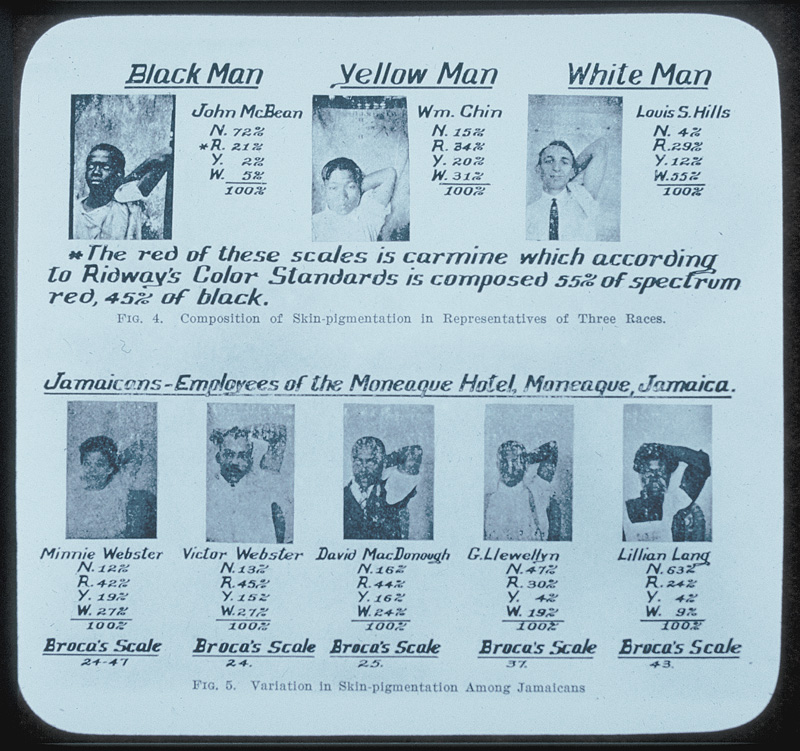
Despite the vast degree of genetic similarity across all of humanity, eugenicists were obsessed with speculating on the physical and mental outcomes of crossing hereditary lines of “race” traits, like complexion and eye color, through reproduction. This meticulously diagrammed chart of Jamaican racial types presents the kind of research that informed policies on segregation of public space and anti-miscegenation laws, such as the Virginia Integrity Act of 1924. These measures tried to prevent the supposed contamination of the “superior” white race through intermarriage. The enforcement and regulation of white purity bred deep patterns of social segregation that have persisted since the days of Jim Crow, and fueled a culture of anxiety around “race mixing.”
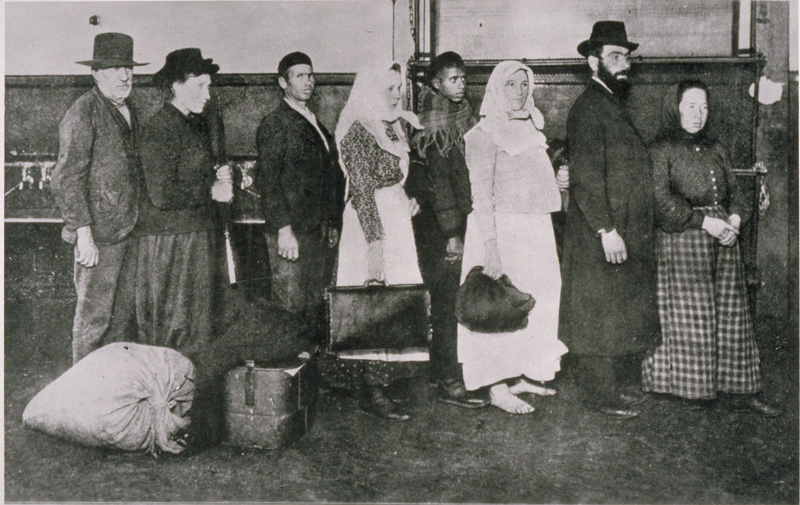
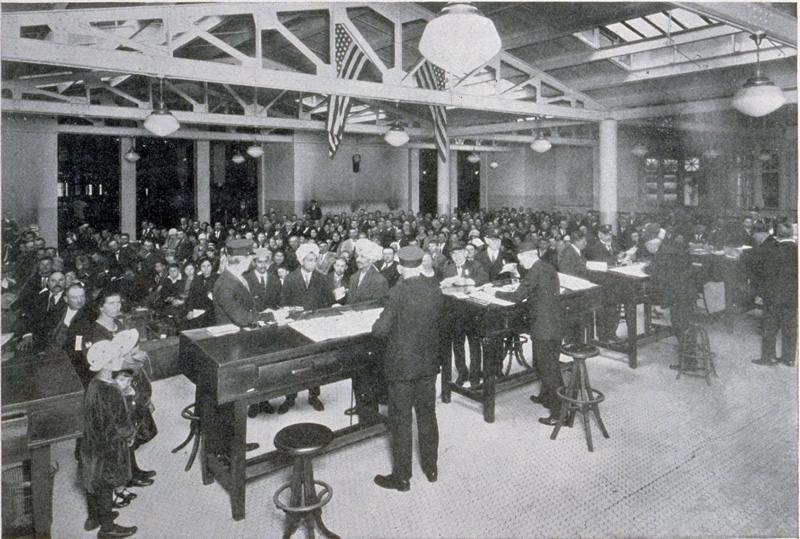
Ellis Island was a critical gateway for immigrants in the early twentieth century. But in contrast to the mythology of the Statue of Liberty and “huddled masses” finding refuge on a welcoming shore, eugenics very much shaped the way they were received, from the medical inspections used to exclude people who looked somehow “defective” or ill, to the draconian conditions under which many immigrants were detained after being labeled potential “public charges.”
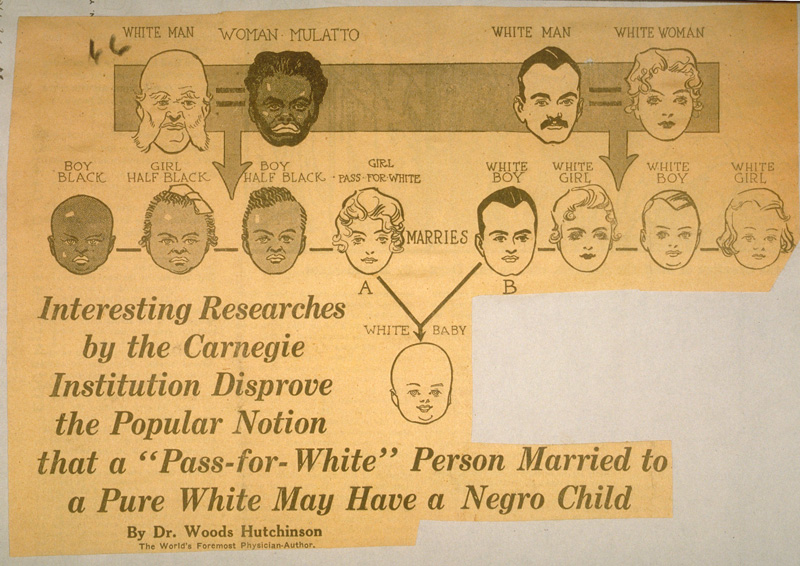
Contemporary scholars have analyzed eugenics as a key tool for the project of racializing the populace and developing ideal genetic types. Scientific texts helped bureaucratize the process by which new arrivals were judged and slotted into the social hierarchy, typically along a racial spectrum that polarized white supremacy and black inferiority, while various markers of physical or mental deviance from the norm were pathologized and criminalized.
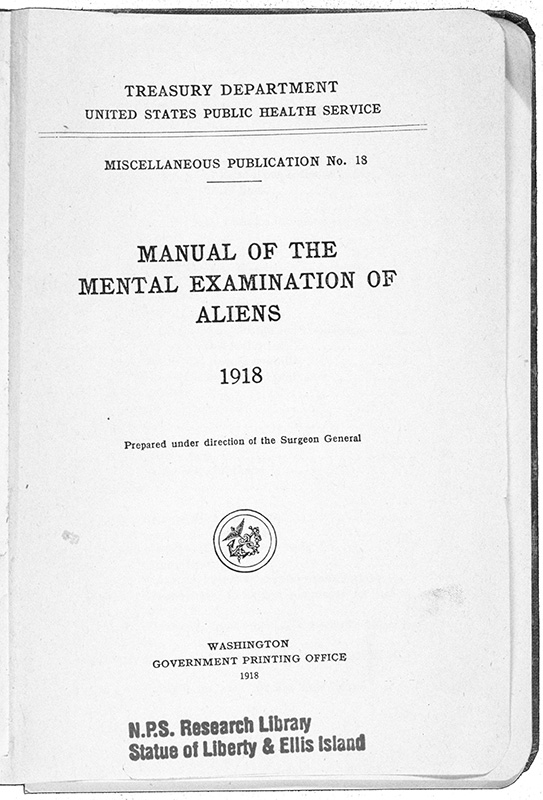 |
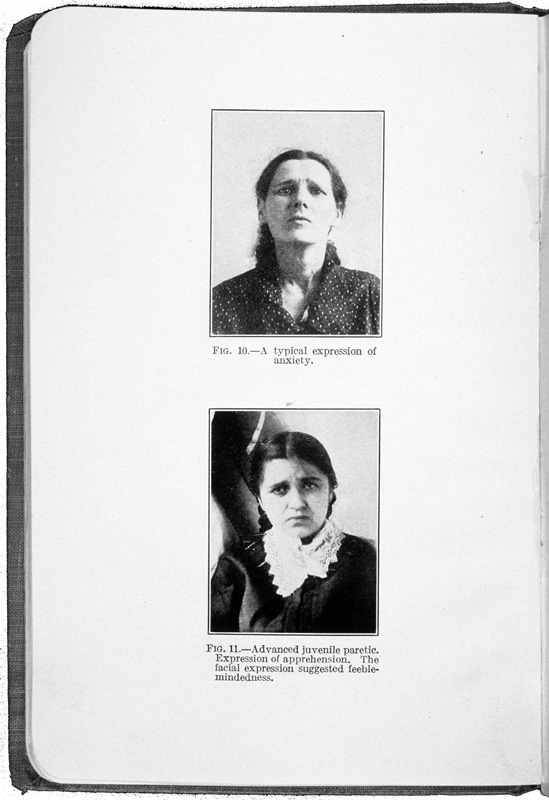 |
The manual advised the inspectors of how to identify mental problems: “A great many feeble-minded persons on ordinary inspection present no physical signs whatever which would indicate real lack of intelligence. Nevertheless, the examiner should have made close observation of facial expressions, both in normal and abnormal persons, especially as to whether they may be said to be gloomy, sad, anxious, apprehensive, elated, hostile, confused, sleepy, cyanotic, exalted, arrogant, conceited, restless, impatient, etc.”

The fear of allowing in “the feeble-minded,” “morons,” and other mentally deficient or disordered individuals merited another level of scrutiny. An elaborate manual for mental hygiene inspectors shows the extent to which racial thought was codified and reproduced through the bureaucratic exercise of inspection. As eugenics was the mastery of racial knowledge, the very act of examination reproduced the hierarchy of power that helped reify racism and justify this systematic dehumanization of “aliens.”
Michelle Chen is a contributing editor at Dissent and co-host of its Belabored podcast.




